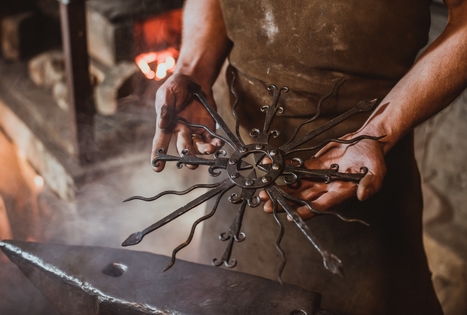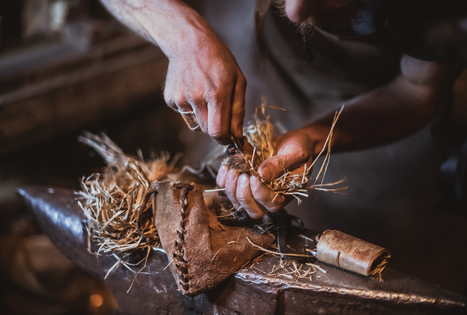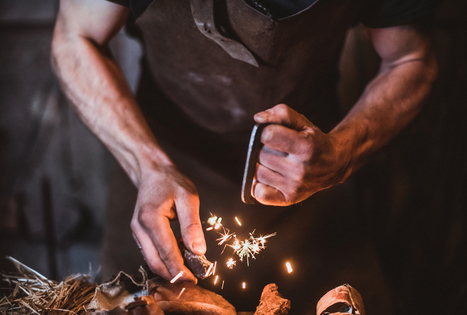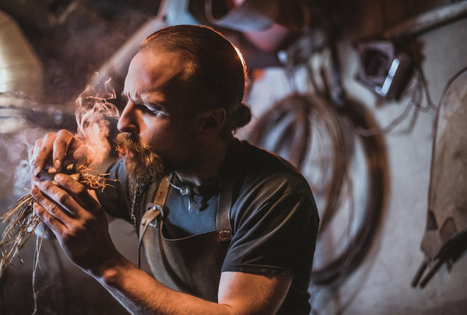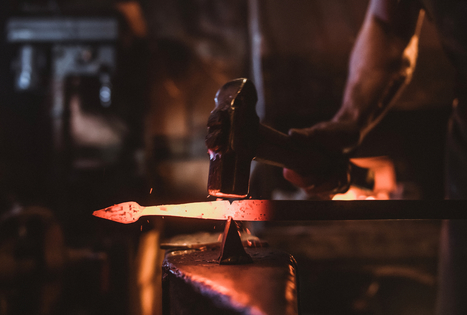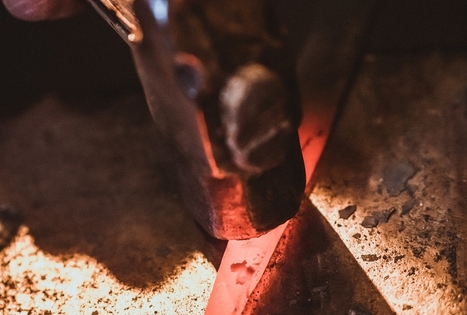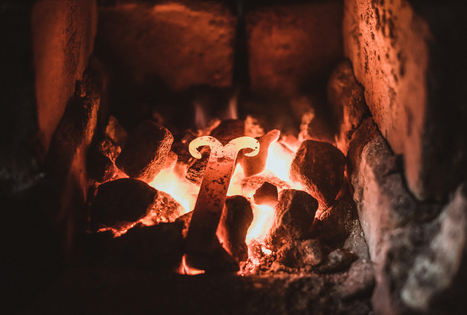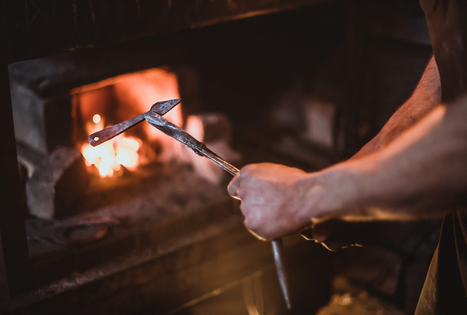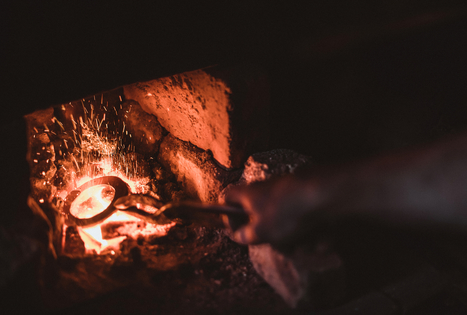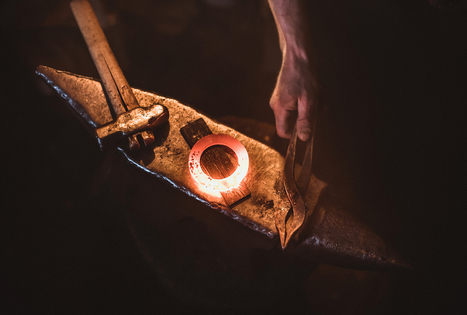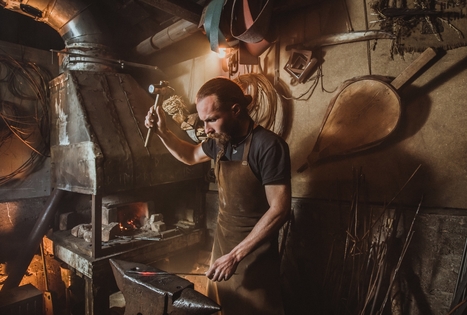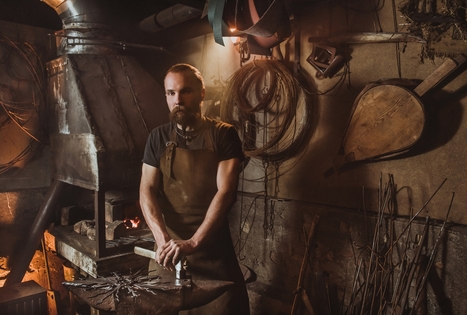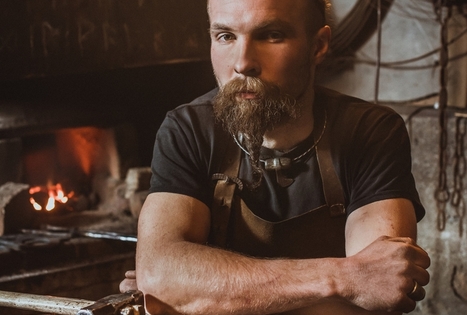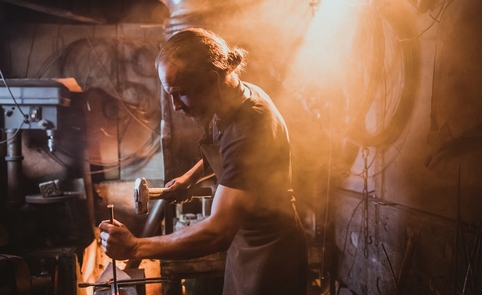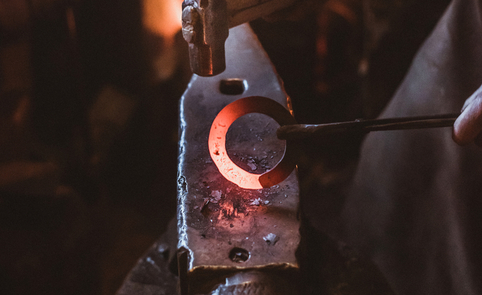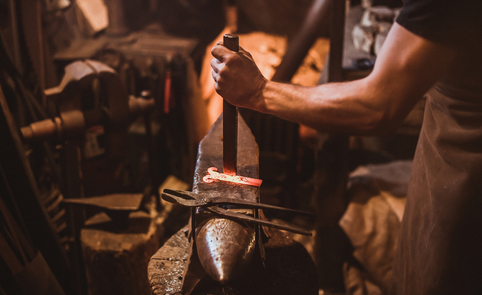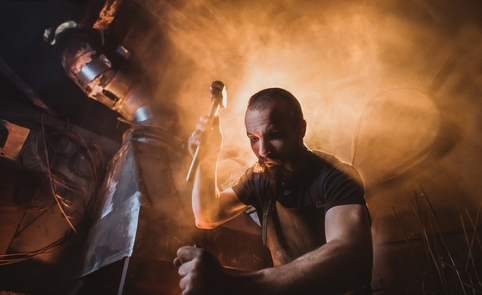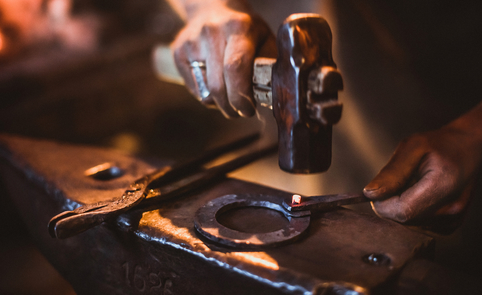Blacksmithing is a traditional craft where metal is processed or metal items are produced by forging or pressing. Blacksmiths usually work with iron and steel, but it is not uncommon for them to use other metals as well, such as bronze, brass or copper.
Blacksmiths have always been respected in countries around the globe
In many religions worldwide, the only “working” god was a blacksmith god. The Greeks had Hephaestus, the Romans had Vulcan, and the Slavic religions had Svarog.
The rudiments of blacksmithing go back to before iron was smelted from ores. And the real Metal Ages began when humanity learned how to smith. The oldest iron products are approximately 4,000 years old.
Blacksmiths were respected people in countries around the globe, and were even equated with sorcerers in some nations. As common people saw it, they managed to make many wonderful things out of relatively nothing, i.e. iron ore, a dirty, grey piece of stone. At first they forged tools and weapons, and later – jewellery, household items, and parts for farming equipment.
Earlier works are characterised by artistic expression (embellished with ornaments, relief, and gold or silver plates), while later ones were more functional. With the emergence of water-powered hammers in the 16th century, forged building décor (lamps, gates, fences) became widespread.
Appeared in Lithuania as imports
The first blacksmithing articles appeared in Lithuania in the 5th century BC. At first they were imported, but local craftsmen began producing them soon after. The first to spread was spiral jewellery (temple rings, bracelets, stick pins) made from brass wire, and more massive jewellery, weapons (arrowheads, axes, knives), and parts for farming equipment (ploughshares) emerged later.
Building a forge was expensive – especially fitting it out. Therefore, craftsmen who had just learned this art could not build their own workshops and equip them. Young blacksmiths often started out working at other craftsmen’s workshops or at forges owned by estates or farmers. In the 14th century, blacksmiths began flocking to cities and estates, and later began setting up in towns and villages. One of the blacksmith’s main jobs was shoeing horses, so he would carry the tools he needed for this with him. Specialised blacksmiths had different names: coppersmiths worked with copper, goldsmiths worked with precious metals (gold, silver), and gunsmiths made cold weapons.
A craft that is still alive today
In the early 1970s, blacksmithing began to be popularised by organising blacksmith days, which later became part of folklore festivals and national holidays. In 1979, a museum dedicated to this craft was opened in Klaipėda. In the late 20th century, artistic blacksmithing began to be developed again. There are currently 31 certified artisan blacksmiths in Lithuania.

